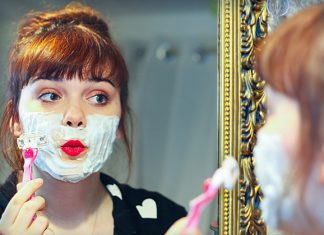What exactly is buffalo hump? A Buffalo hump is a hump that forms behind the shoulder. It usually develops when fat gathers behind the neck. This health condition is not always severe.
Buffalo hump on the back of the neck can also be exacerbated by cysts, tumours and other abnormal growths.
What is the dowager’s hump?
Dowager’s hump, also called postural kyphosis, is a medical condition that generally occurs due to excessive slouching. If left untreated, it can lead to severe problems like hyperkyphosis and vertebral fractures.
Dowager’s hump is an abnormal curvature towards the outside on the upper back of the thoracic vertebrae.
Muscle imbalances, if corrected, and daily habits, if made better, can eliminate much of the problems related to the hump on the back of the neck.
Three major causes for hump
Some people are at a higher risk of having neck humps due to age, gender, genetics and other health conditions like Cushing’s syndrome or osteoporosis when bones thin out.
However, the following three reasons are the most common causes of developing a hump that can affect anyone.
1. Poor Posture
Poor posture with the head pushed forward, slouching at the back, and a tilted pelvis can cause kyphosis, which further leads to the formation of the hump for the wrong alignment of the spine.
Forward head posture is, in fact, most responsible for hump formation. Be careful when working at the computer or using your phone, or carrying a heavy backpack.
2. Injury
A misaligned spine can also be caused by a compression fracture that is healing poorly. The misaligned spin eventually leads to a hump formation.
3. Sleep Position
If you are sleeping in an incorrect position, it puts pressure on the spine and the surrounding soft tissues. If this is repeated every day, it will gradually form a hump under the neck on the back.
In some cases, buffalo hump causes also include certain medications for treating obesity and even prolonged use of steroids. These can be the causes of Dowager’s hump too.
Osteoporosis patients suffer the problems of brittle bones and abnormal thin bones. The body cannot absorb much calcium during the time it is affected by osteoporosis.
Older women and menopausal women experience osteoporosis more. Naturally, if you are already suffering from this health condition, you are at a higher risk of getting your spine curved and thus a hump at the back of your neck and shoulder. This is called kyphoscoliosis.
Cushing’s syndrome causes obesity issues, acne, irregular menstruation, changes in sex drive, chronic pain, etc. The muscle and bones also change if someone is affected by Cushing syndrome. It can also lead to fat gathering behind the neck and eventually form a hump there.
Treatment for buffalo hump removal
The best way to go forward with the treatment for buffalo hump removal is by focusing on the underlying issues responsible for the hump growth.
If the cause of the hump is not appropriately treated, it will again return. Cosmetic surgery can be of great help when it comes to removing the fat deposit. Though expensive, this is the most assuring way for buffalo hump removal.
A hump can also form due to the adverse effects of certain prescribed medicines and steroids. In those cases, always seek a doctor’s help for alternative medications and change in per dose. Never abruptly stop any medication that you are already taking without the permission of the doctors.
A good diet routine and regular exercise regimen can prevent the formation of a hump.
Diagnosis of buffalo hump
A physical examination of your body will help the doctor to detect the problem of a buffalo hump. Specific tests can help to identify the problem better.
Be sure to give proper information about your past medical history. If you are facing other symptoms, do inform the same to your doctor.
Few important tests that your doctor will suggest you do are:
- XRAY
- MRI
- Bone Density test
- Blood Test
- CT scan
Treatment of Dowager’s Hump
The cause of kyphosis or dowager’s hump usually determines the way to treat it. If the problem is first identified in someone’s adolescent stage, it must be checked and handled on an immediate basis.
One should not leave the problem untreated and uncared for too long. If younger patients are not treated on time, the issues may become severe during adulthood.
Frequent visits to the doctors will allow efficient handling of the issues.
Let us look at the dowager’s hump treatment ways.
- Physiotherapy and exercises: These help to strengthen the muscle of the spine. Initially, it will seem very difficult to maintain a proper posture, but gradually it will show positive results.
- Bracing: Bracing is generally a way to treat young adults and children. Children cannot take the pressure of physiotherapy and so bracing can help them. In fact, bracing can be combined with natural physical therapies.
- Surgery: Surgeries such as vertebroplasty and kyphoplasty, can restore the height to the vertebra and eradicate the pain. The former is a non-surgical one which uses a needle in the areas of the body that are affected. The latter is performed with the help of a tube through which a balloon is inserted. With the help of the surgeries, the damaged parts can be restored to its normal state.
Complications and Symptoms of Dowager’s Hump
Humps are usually painless, but if you suddenly start experiencing pain, you must visit your doctor for medical aid and guidance.
Stress and anxiety with the appearance of the hump are reasonable but should be controlled. If ignored with time, the hump will increase in size, making it difficult to tilt the neck in any direction. You cannot easily and quickly turn your head from one side to another.
- Muscle feels tired and weak
- Breathing difficulties
- Lung movement restricted
- Balance problems
- Changes in postures
- Chronic pain
- Curve in spine
- Height loss
- Thoracic kyphosis or hunched back
- Loss of hunger and appetite
- Insomnia
- Bulging abdomen
- Stiff neck and neck
- Loss of bowel and bladder control
- Loss of sensation
- Crush fractures
- Multiple compression fractures in the vertebra
Prevention of Hump
You cannot completely prevent the growth of humps at your back below the neck and shoulder. However, there are several ways with which you can reduce its risk of developing.
A daily dose of calcium and vitamin D can protect one from the problems of osteoporosis. You can also take calcium supplements after consulting with your doctor.
Regular exercise and physiotherapy can prevent obesity and bone thinning conditions. It is also crucial to follow a healthy and balanced diet.
If you have reached the stage of menopause, your calcium intake must also increase. Take the doctor’s help to know the correct dose required to be taken during this time. Always remember, the sooner, the better it is. So seek help the moment you start experiencing the symptoms.






